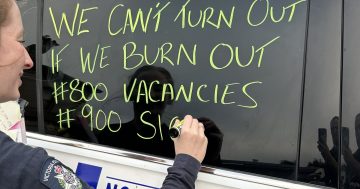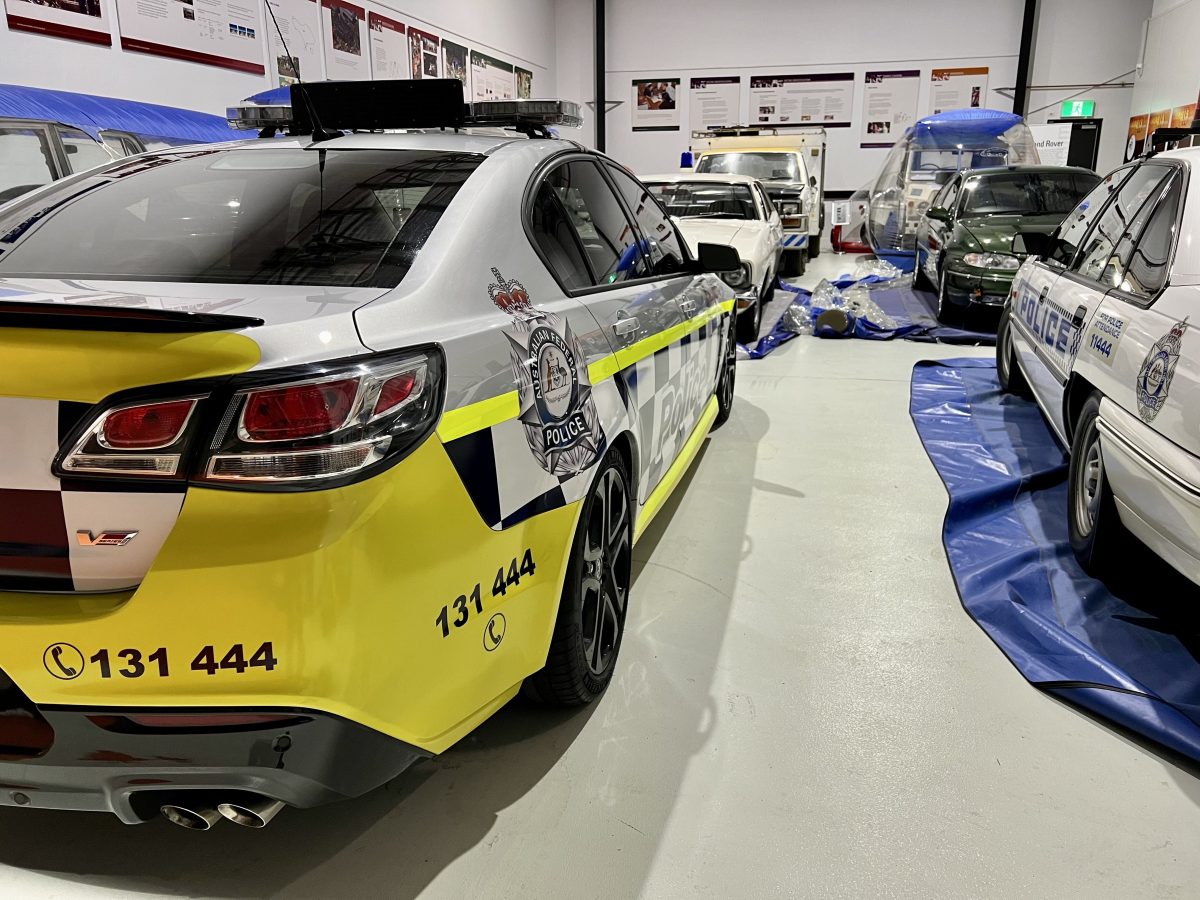
A peek inside the AFP Museum in Hume. Photo: James Coleman.
A convoy of historic police cars braved the dreary weather last week to carry the touchstones of 15 police officers who died in the line of duty.
A 1974 XB Ford Falcon, 1976 XC Ford Falcon Coupe, 1992 VP Holden Commodore and 1999 VT Holden Commodore – all still decked out with period police lights and badges – took the touchstones from Queanbeyan Police Station to the National Police Memorial in Kings Park.
These cars are usually tucked safely away inside “car-coons” at the Australian Federal Police (AFP) Museum in Hume, but emerged on 29 September to help mark National Police Remembrance Day.
The museum is more like an archive, and closed to the public. But many objects will move to a permanent display on the Acton Peninsula later this year.
The complete collection comprises 14 cars and motorbikes – combining to form the story of how policing has changed over the decades.
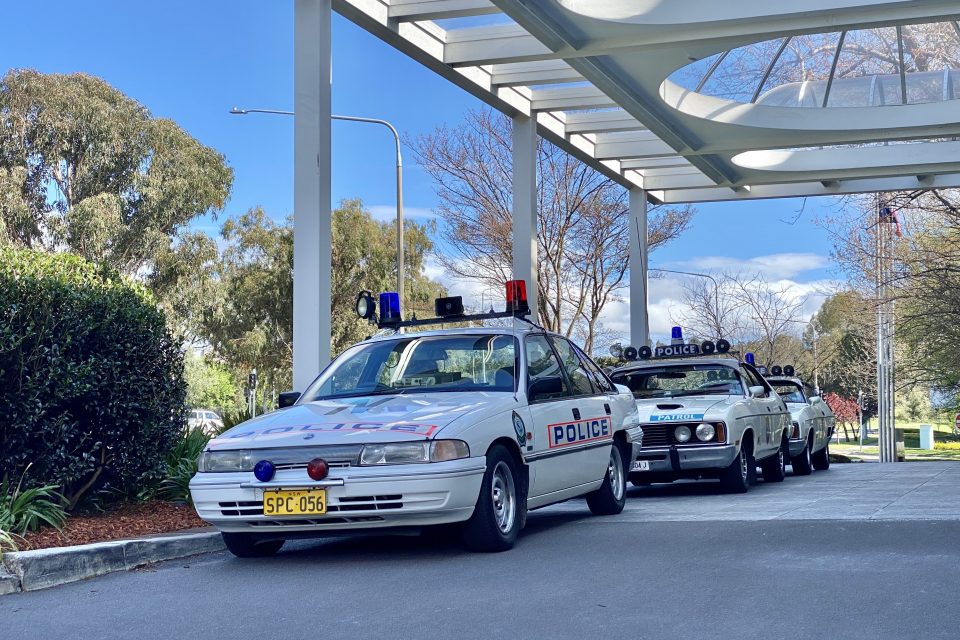
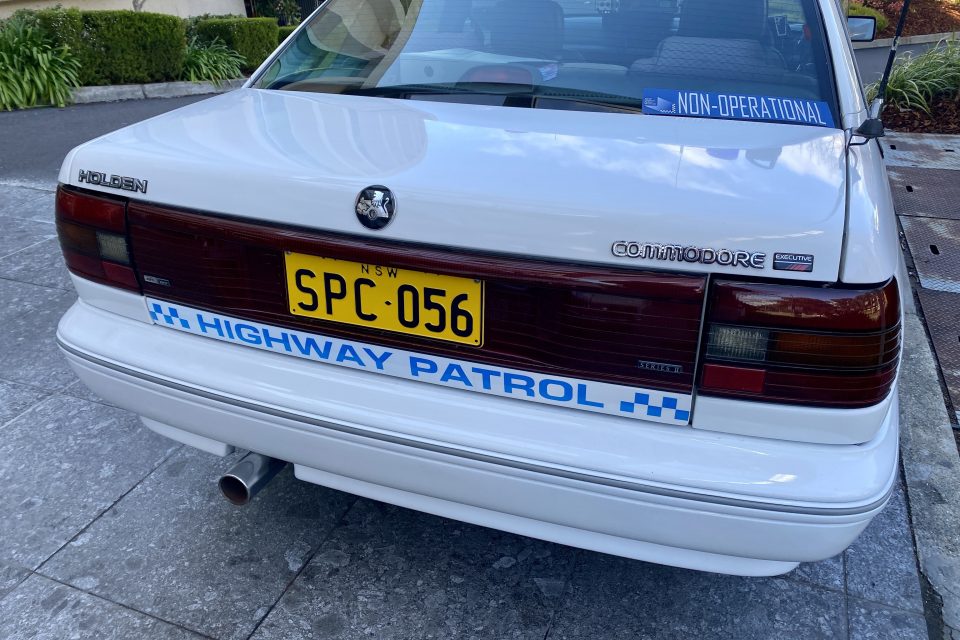
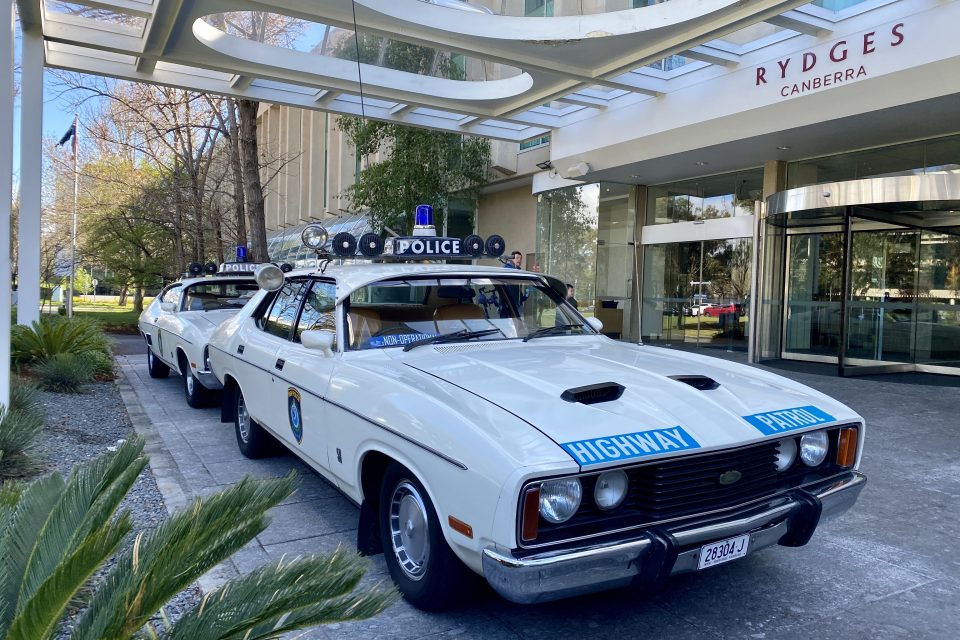

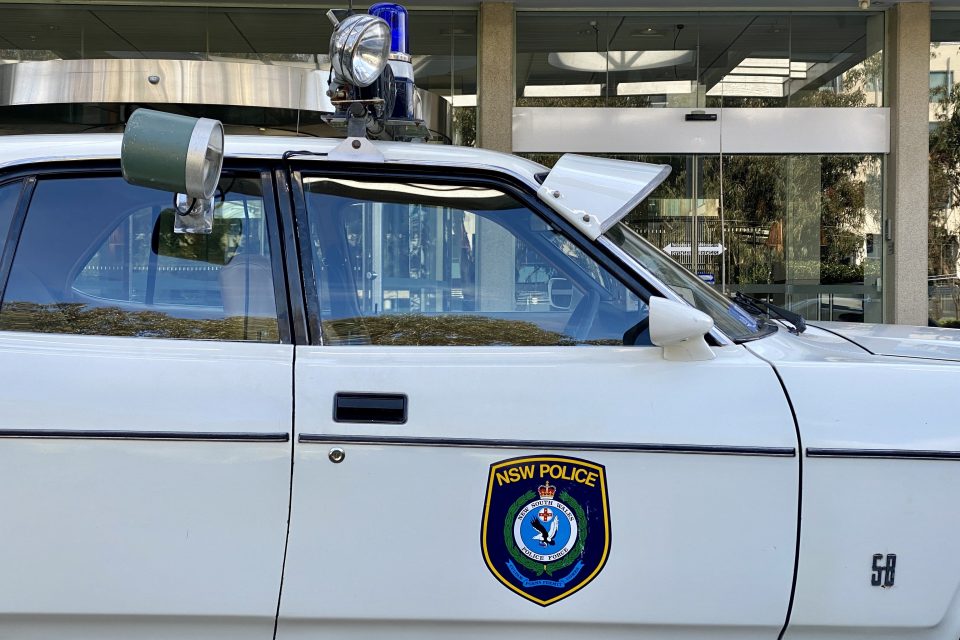
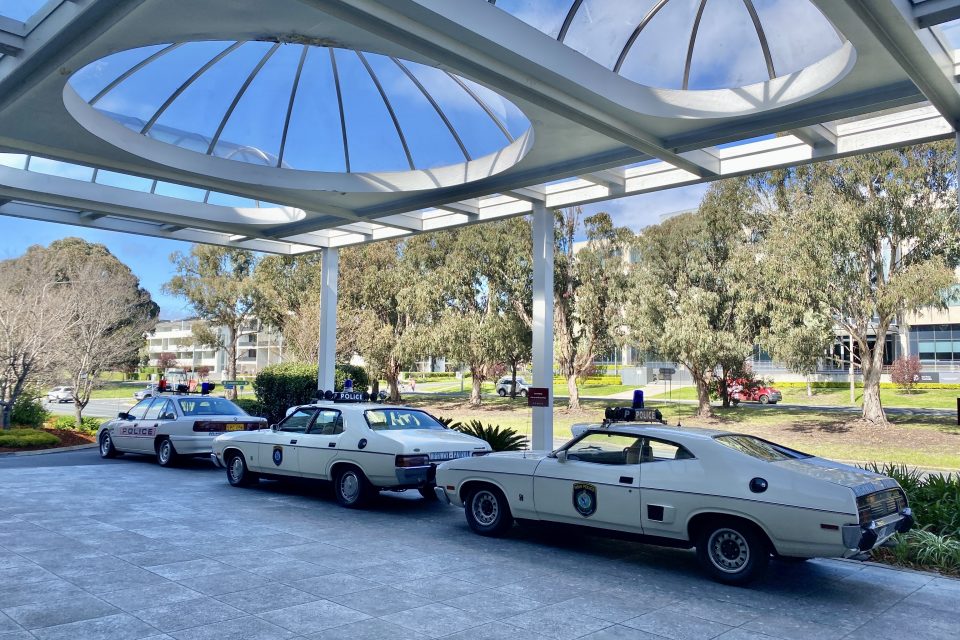
AFP Superintendent Dean Elliot oversees recognition, ceremony and protocol. When he started in the Northern Territory Police Force, Ford BA Falcon sedans and Toyota HiLux utes were the order of the day.
He says every vehicle in the museum is there for a reason.
“We don’t just take them off the road – they have to have some sort of significance.”
Take the 1992 Holden VP Commodore. It’s still registered and fully functional and “presents as if it had just finished duty”. But the reason it isn’t rotting away in a Richardson backyard is because it was transported overseas to a motor show in Japan.
“It was presented as Australia’s cutting-edge police car,” Dean says.
As for the 1974 XB Ford Falcon, AFP Reservist Andy Brown tells its story.
“It was one of only two of those vehicles owned by the ACT fleet in those days but it was taken off the road with only 34,000 km on it and squirreled away at the back of a garage by one particular sergeant,” Andy says.
“He thought it would be an iconic car in years to come.”
Not only was he right, but it also means the Falcon is still in 1974 condition.
“We make a point with our vehicles to describe them as preserved, as opposed to restored,” Andy says.
“Car enthusiasts might restore iconic vehicles back to their original pristine condition, but ours are preserved with the story of it.”
Take the scrapes on the underside of the XB Falcon as an example.
“We spoke to people who drove the car at the time and there was a particular bump on the road between Williamsdale and Canberra. If the car went over that bump at sufficient speed, the bottom of the car would scrape and sparks would fly out the back.
“An enthusiast would buff those out, but we see them as part of the history of the car.”
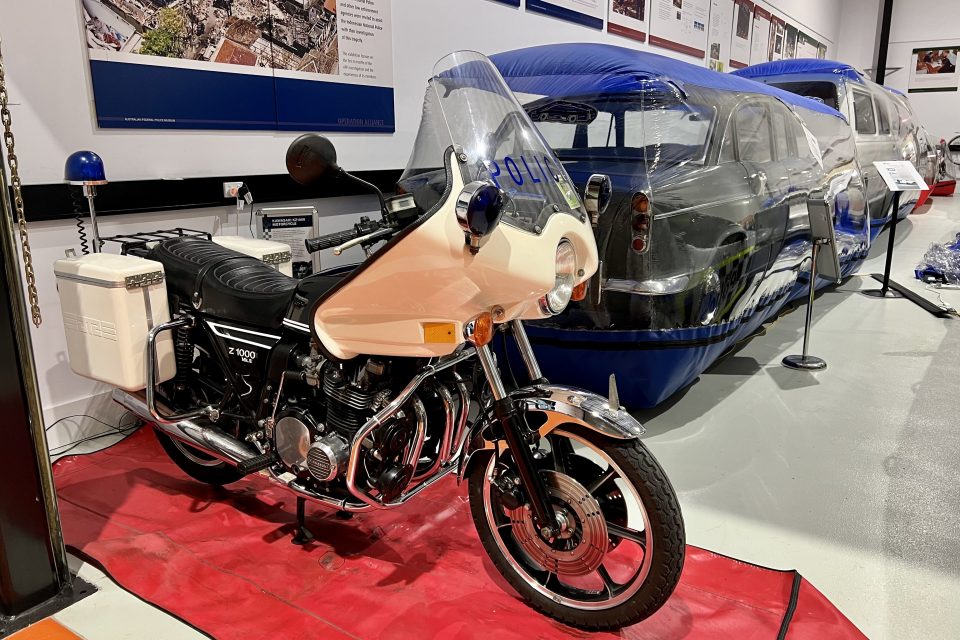

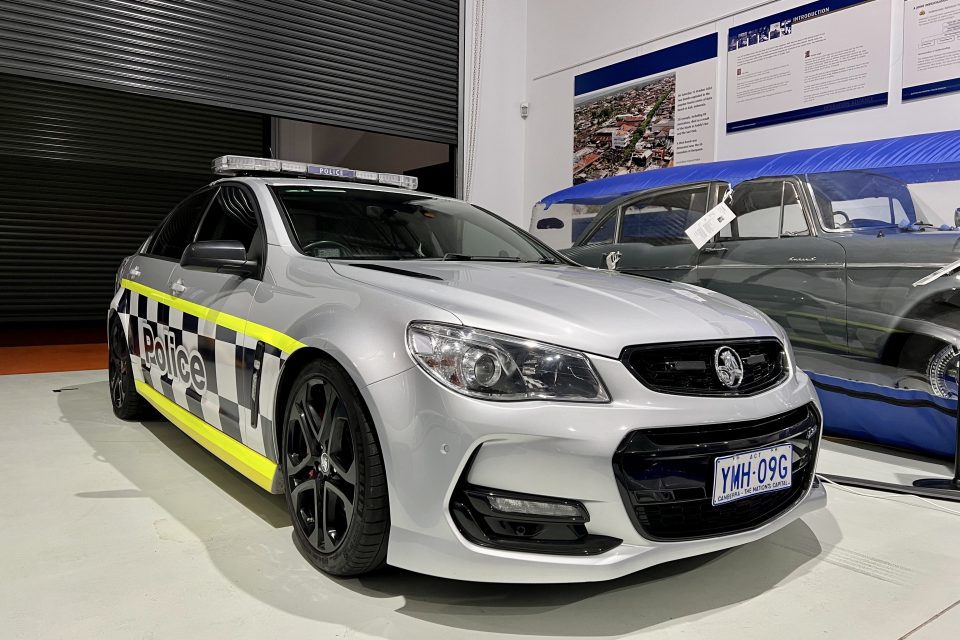
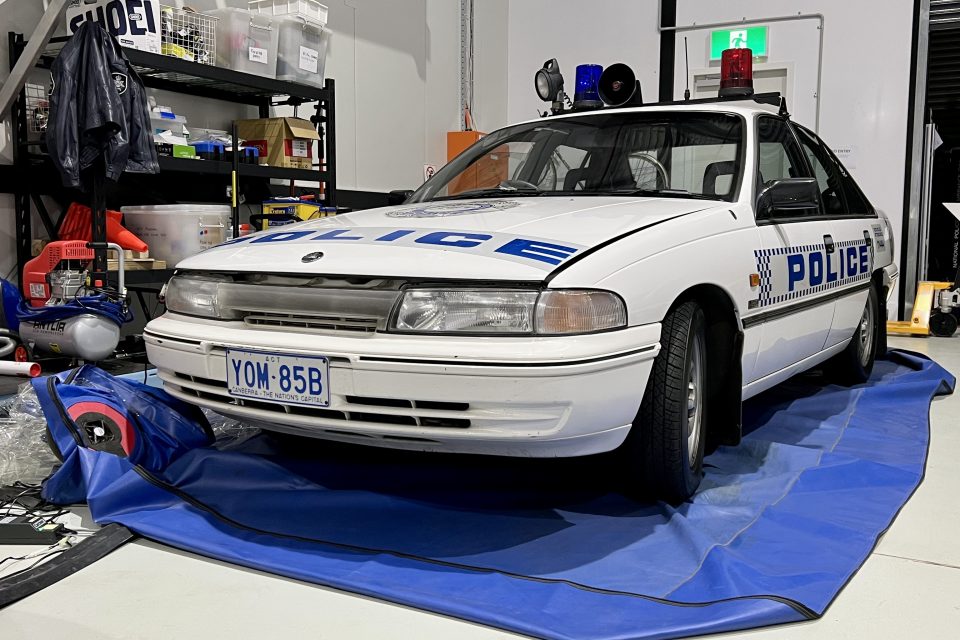
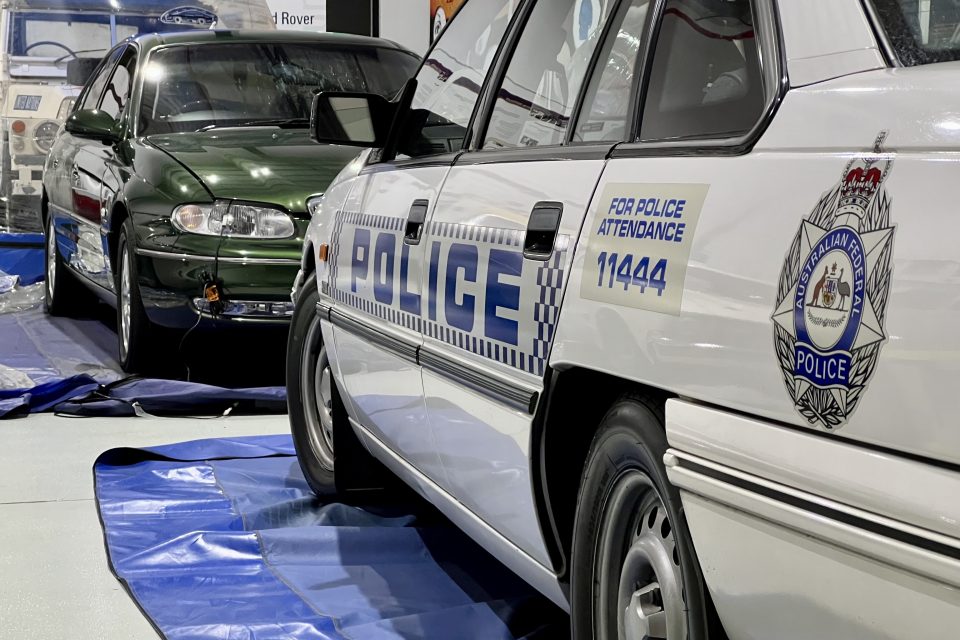
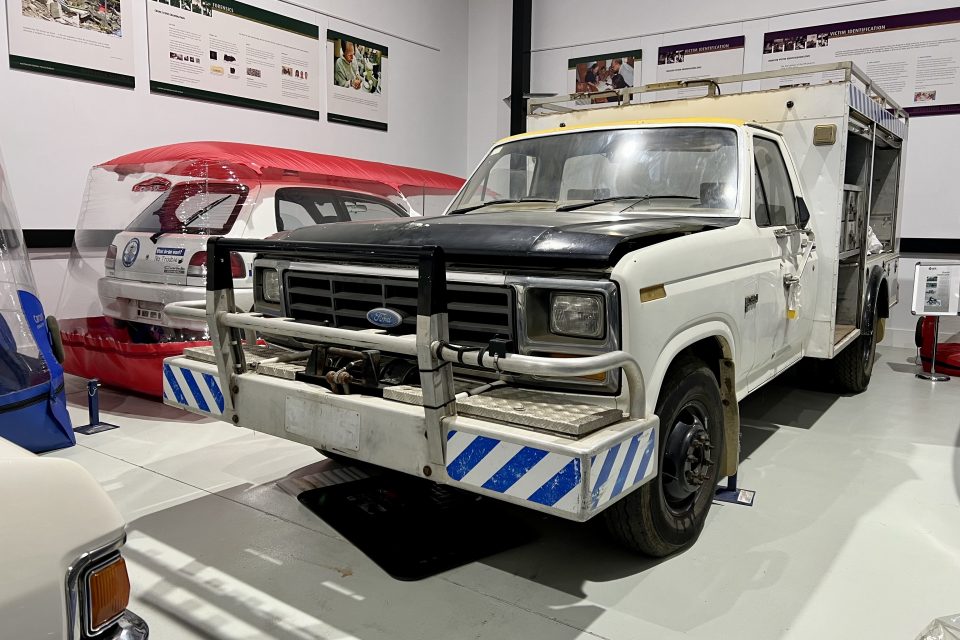
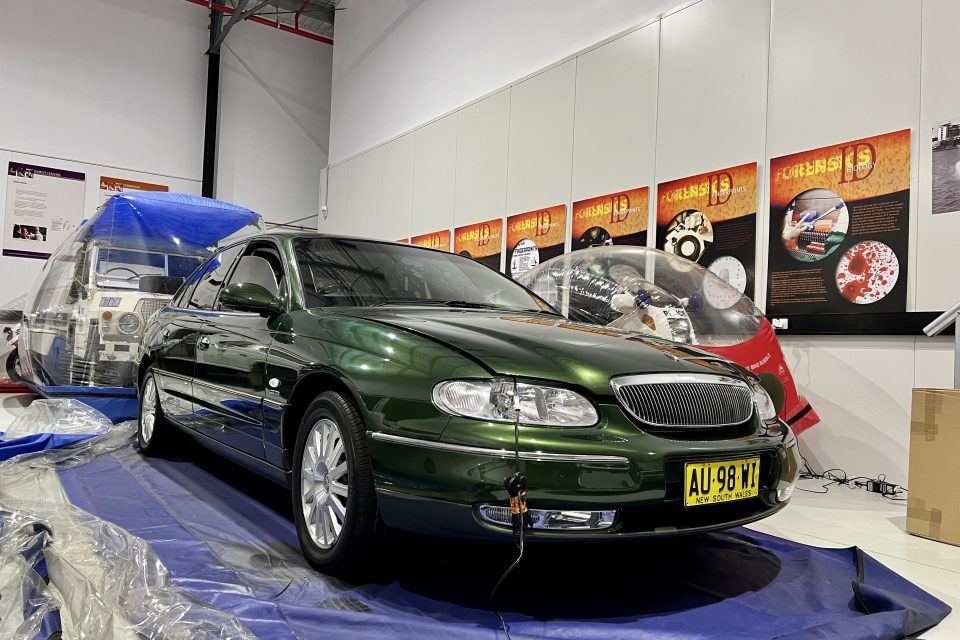

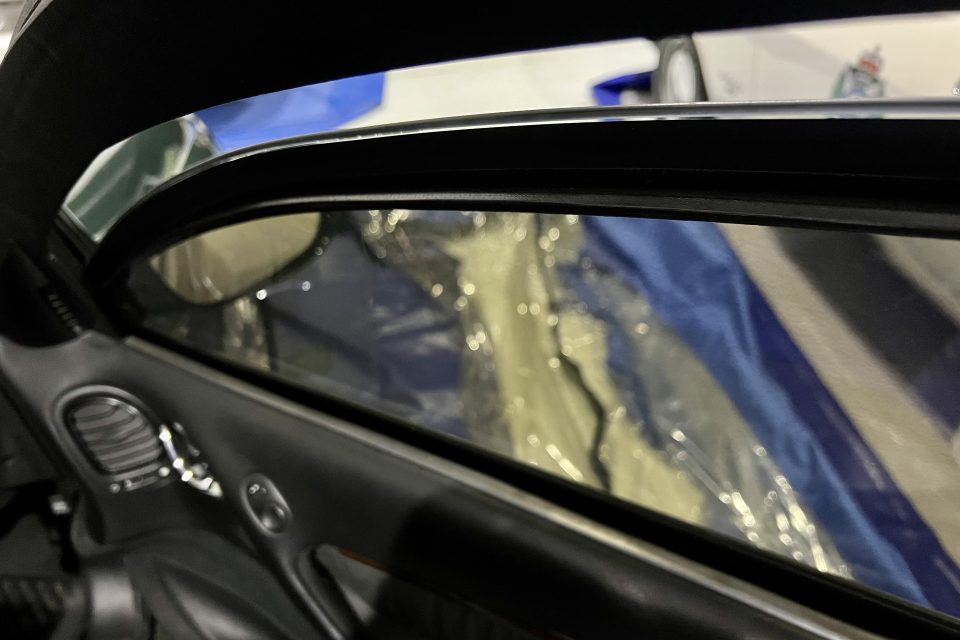
Andy retired from the force in 2017 but returned in mid-2020 on a part-time and casual basis, “honestly, because I loved the work”. He still remembers the day he joined as an 18-year-old in June, 1983 – when handed the keys to an XD Falcon.
“A young recruit today steps into a BMW X3 as their first patrol car, but my experience was exactly the same,” he says.
“I was in a brand-new car with a limited number of kilometres. And I was told to drive it fast sometimes, within guidelines.”
Up until recently, police cars were snatched off the local Holden and Ford production lines in stock-standard form, then kitted out and badged up as police vehicles.
The ACT was always too small to receive the treatment afforded to NSW, where Holden made the BT1 Commodores specifically for highway patrol duties.
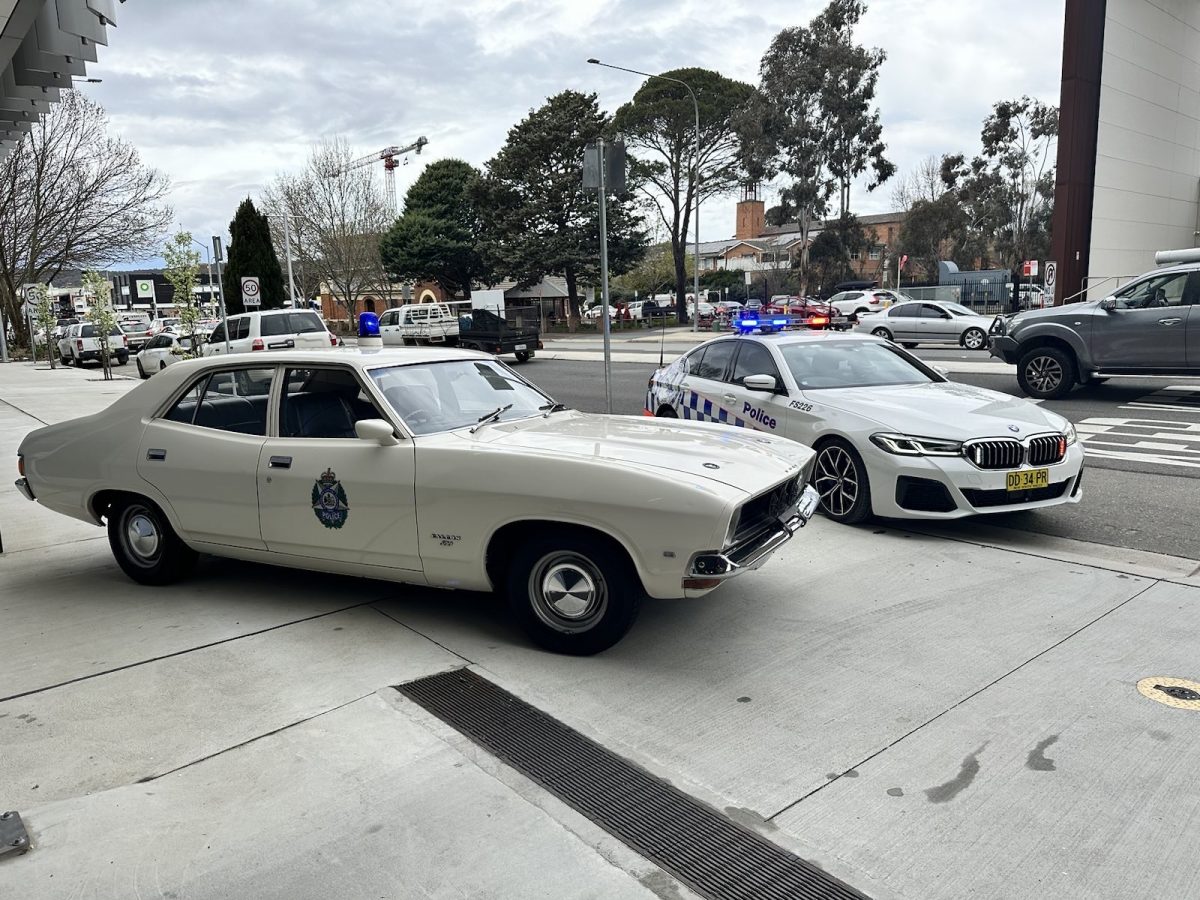 The 1974 Ford Falcon next to a modern-day BMW patrol car from NSW. Photo: AFP.
The 1974 Ford Falcon next to a modern-day BMW patrol car from NSW. Photo: AFP.
Nowadays, it all comes down to the ANCAP safety rating, acceleration, braking, handling and practicality.
Expectations have changed too.
“Back then, it was purely a mode of transport, but nowadays, a police car is basically a mobile office full of cameras and computers,” Andy says.
“It’s a completely different concept.”
Anyone with first-hand experience or stories about police vehicles, within AFP or ACT Policing, can contact the AFP Museum via email.
Original Article published by James Coleman on Riotact.




